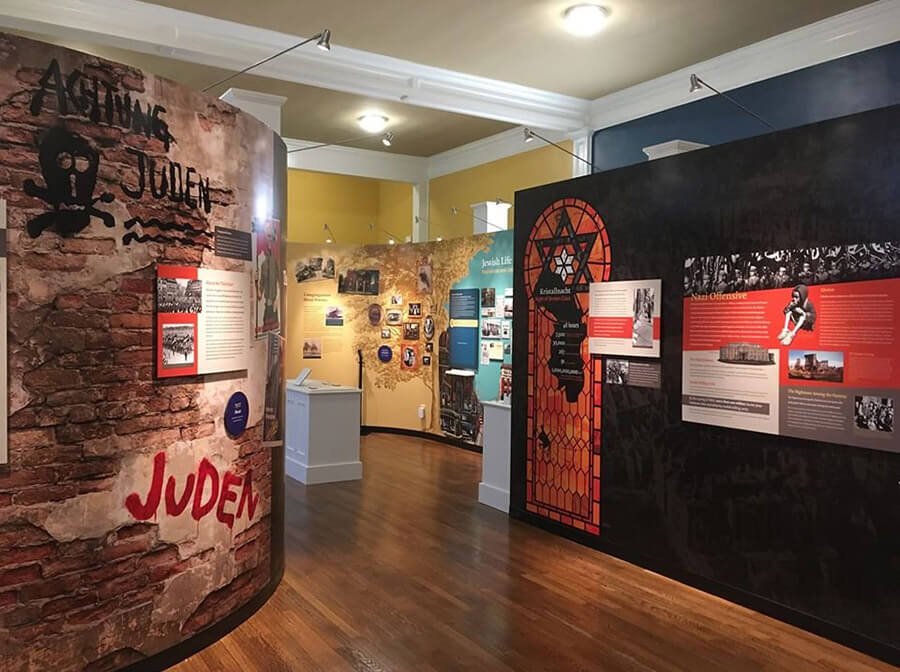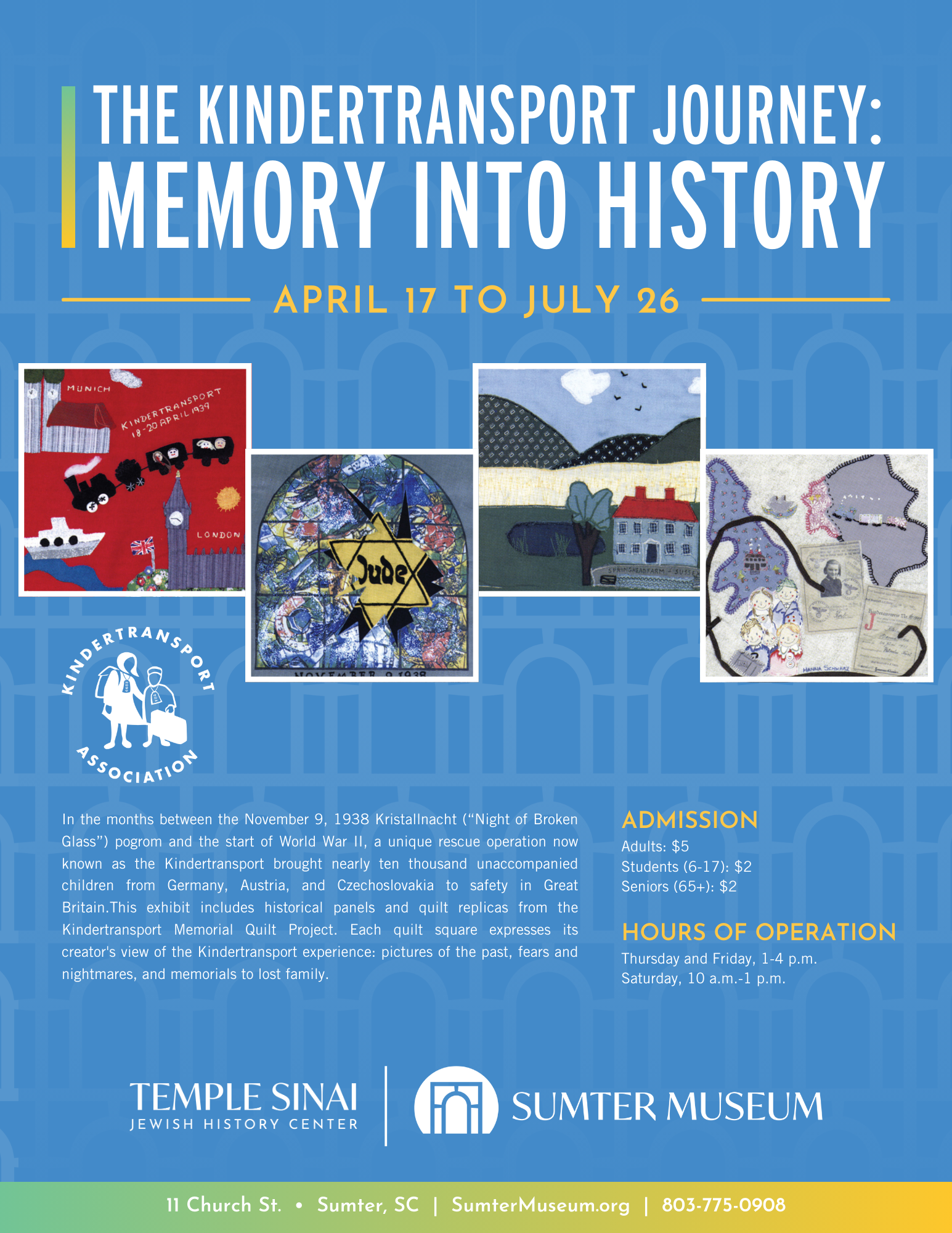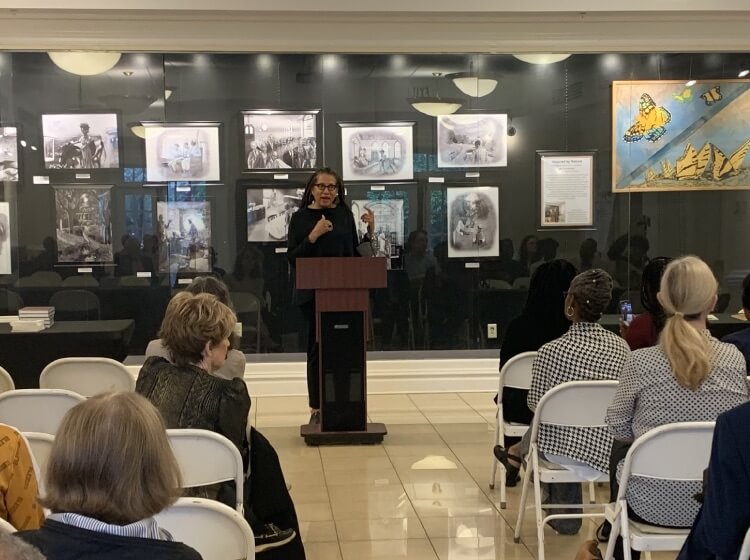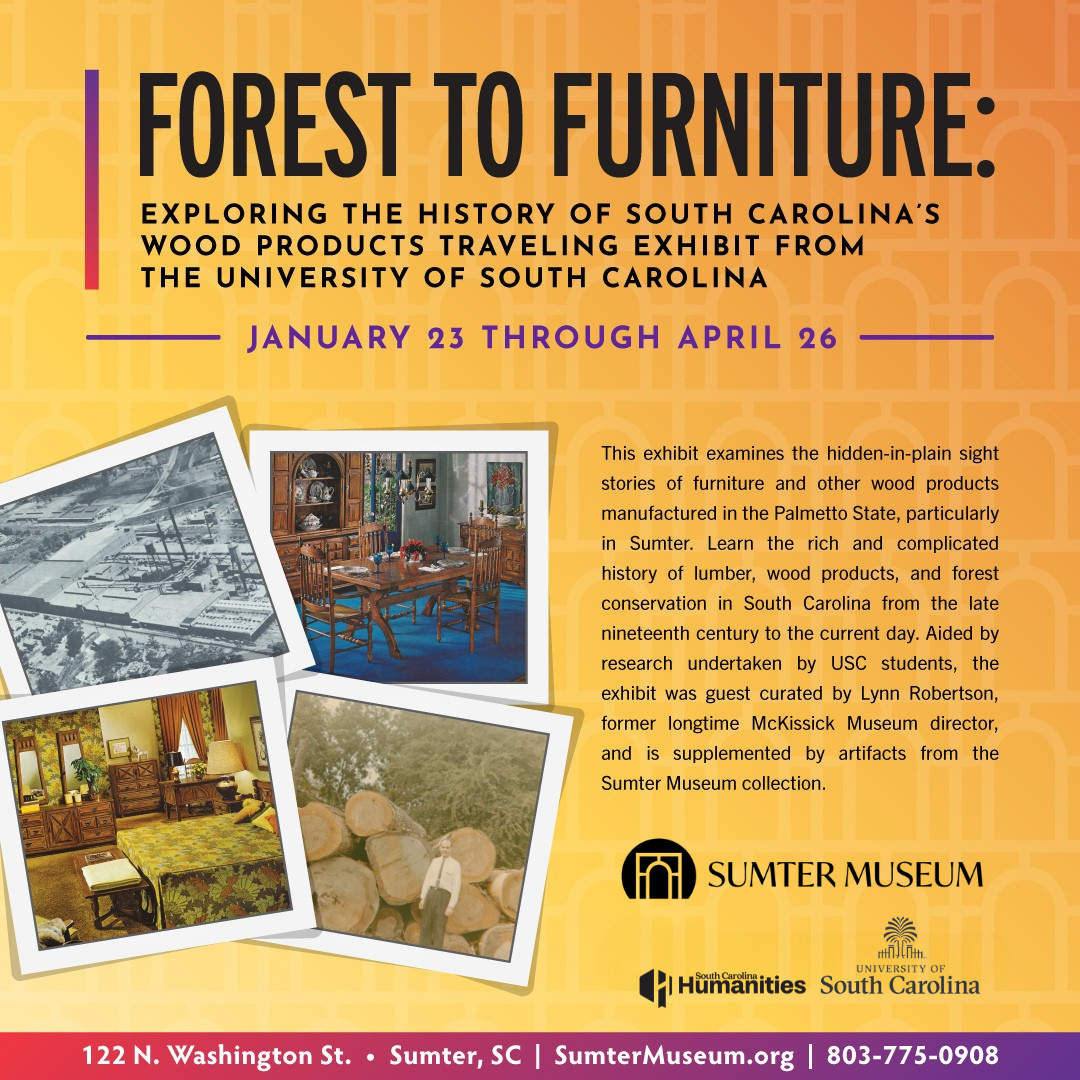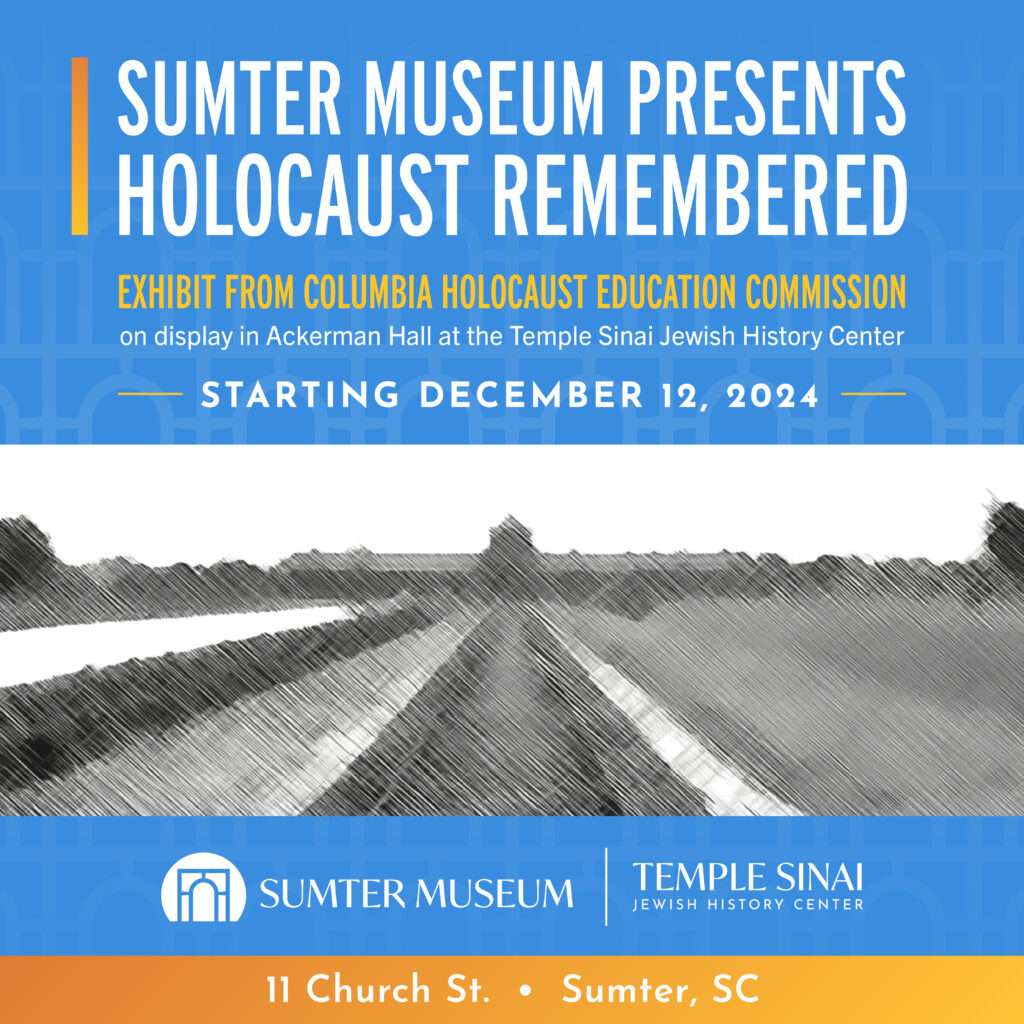EXHIBITS
WILLIAMS-BRICE HOUSE
Stroll through history entering our gates to enter the elegantly restored Williams-Brice House, an Edwardian house built in 1916 by the Moses and Phelps families, a testament to Sumter’s architectural heritage and community life in the early 20th century.
Take in our decorative arts and fine art collections. Linger in our period rooms and imagine life at a slower pace. You can also learn about our city’s namesake in the Thomas Sumter Room.
Upstairs, you’ll see a temporary exhibit, FOREST TO FURNITURE, in partnership with the University of South Carolina & SC Humanities.
Temple Sinai Jewish History Center
Dive into the rich tapestry of Sumter’s Jewish community and its profound impact within the broader Jewish diaspora in America. Featuring a poignant permanent Holocaust exhibition, Ackerman Hall for cultural events, and Temple Sinai, one of America’s oldest Reform congregations.
The Kindertransport Journey: Memory Into History: April 17 – July 26
In the months between the November 9, 1938 Kristallnacht (“Night of Broken Glass”) pogrom and the start of World War II, a unique rescue operation now known as the Kindertransport brought nearly ten thousand unaccompanied children from Germany, Austria, and Czechoslovakia to safety in Great Britain.This exhibit includes historical panels and quilt replicas from the Kindertransport Memorial Quilt Project. Each quilt square expresses its creator’s view of the Kindertransport experience: pictures of the past, fears and nightmares, and memorials to lost family.
Heritage Education Center
Engage with our educational programs and workshops designed to deepen your understanding of Sumter’s diverse heritage. Explore interactive displays and participate in hands-on activities that bring history to life.
Carolina Backcountry Homestead
Walk through time in our immersive homestead to experience Sumter backcountry life c. 1800, showcasing period structures that depict life on a family farm in Sumter, South Carolina which was commonly known as the “Backcountry” from 1750 to 1850.


